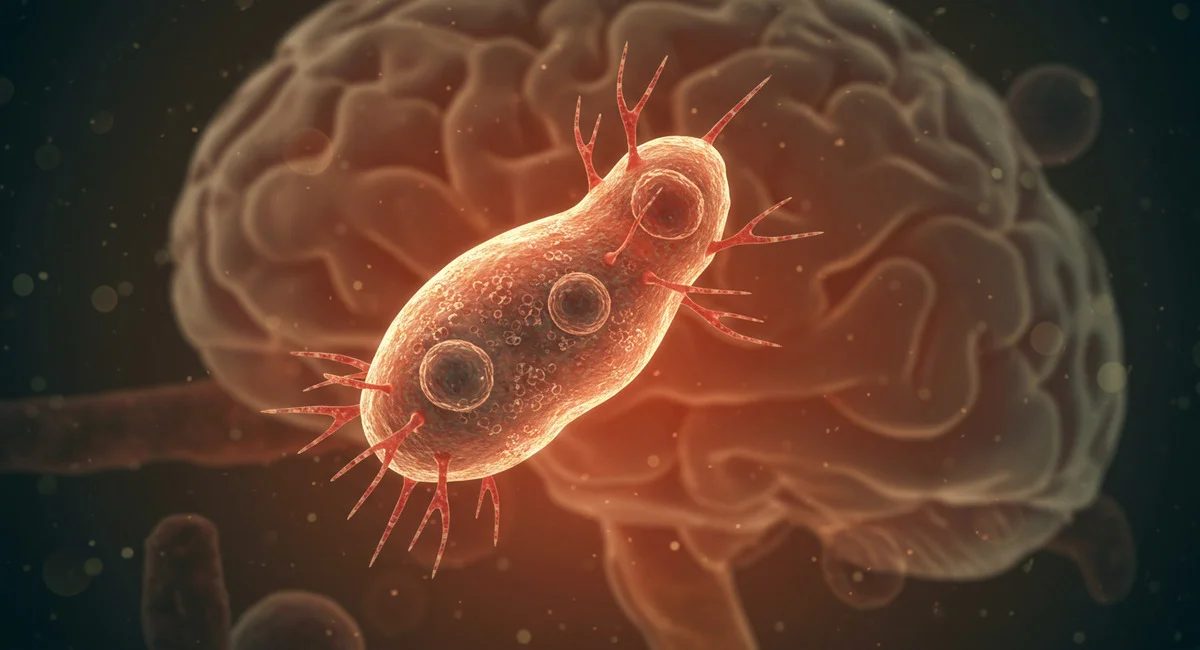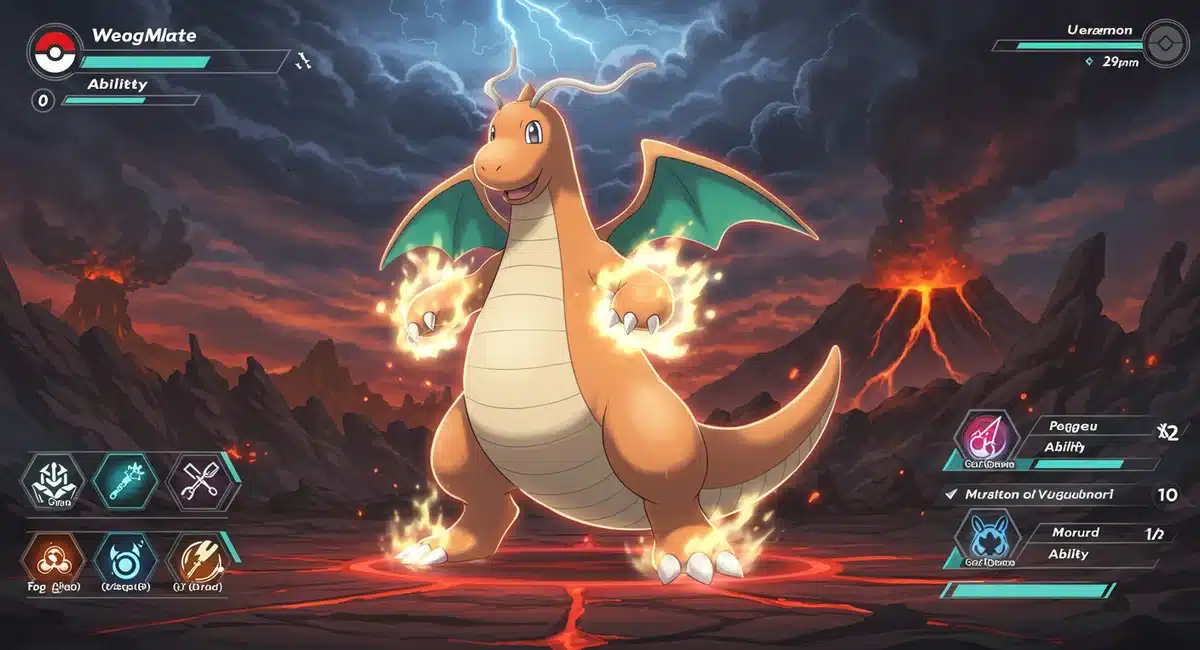What is a Brain eating amoeba?
The term Brain eating amoeba refers to a microscopic organism known scientifically as Naegleria fowleri. Despite the frightening name, it doesn’t actually consume the brain but causes a severe and often deadly brain infection called Primary Amebic Meningoencephalitis (PAM).
Naegleria fowleri is a single-celled amoeba commonly found in warm freshwater environments. It infects people when contaminated water enters the nose, travels to the brain through the olfactory nerve, and causes brain tissue inflammation and destruction.
While infections are rare, the condition is almost always fatal. Understanding this amoeba and taking basic precautions can make a significant difference.
Where Is the Brain-Eating Amoeba Found?
This organism thrives in:
- Warm freshwater lakes and rivers
- Hot springs and geothermal water sources
- Poorly maintained swimming pools
- Water heaters below 50°C (122°F)
- Soil and sediment (rarely)
The brain-eating amoeba is more commonly found in regions with warmer climates, especially during the summer. In the United States, southern states like Florida and Texas report most cases.
Global warming and rising water temperatures are expanding the habitats where Naegleria fowleri can survive, raising public health concerns.
How Does the Amoeba Infect Humans?
Infection occurs when water contaminated with Naegleria fowleri enters the body through the nose. This usually happens when people swim, dive, or engage in water sports in warm freshwater environments.
Once inside the nasal passage, the amoeba travels up the olfactory nerve to the brain. There, it causes inflammation, swelling, and destruction of brain tissue, leading to Primary Amebic Meningoencephalitis (PAM).
Important: Drinking contaminated water does not cause the infection. The amoeba cannot survive in the stomach.
Symptoms of Brain-Eating Amoeba Infection
Symptoms typically begin 1 to 9 days after exposure. The early signs resemble those of meningitis, which can make early diagnosis challenging.
Early Symptoms (Days 1-3):
- Severe frontal headache
- Fever
- Nausea and vomiting
- Stiff neck
Advanced Symptoms (Days 4-7):
- Confusion and lack of attention
- Loss of balance
- Seizures
- Hallucinations
- Coma
The disease progresses rapidly, and death usually occurs within 5 to 12 days of symptom onset.
Diagnosis and Treatment
Diagnosis
Diagnosing a brain eating amoeba infection requires urgent medical attention. Because symptoms resemble other illnesses, such as bacterial meningitis, diagnosis can be delayed.
Diagnosis is usually confirmed through:
- Microscopic examination of cerebrospinal fluid (CSF)
- Polymerase chain reaction (PCR) testing
- Brain imaging (MRI or CT scan)
Treatment
Treatment is challenging due to the infection’s rapid progression. However, early diagnosis and a combination of aggressive treatments have saved lives.
Medications include:
- Amphotericin B: An antifungal drug administered intravenously or intrathecally
- Miltefosine: An experimental antiparasitic medication
- Fluconazole, Rifampin, and Azithromycin: Supportive antibiotics
Doctors may also lower the body temperature to reduce brain swelling.
Prevention Tips
Although infections are rare, prevention is critical when dealing with the brain-eating amoeba.
Water Safety Practices
- Avoid swimming in warm freshwater lakes or rivers, especially in summer.
- Do not swim in poorly maintained or unchlorinated pools.
- If swimming, try not to stir up sediment.
Nasal Precautions
- Use nose clips or keep your head above water when swimming.
- Never allow water to enter your nose while in freshwater bodies.
Safe Nasal Rinsing
- Use only distilled, sterile, or boiled water for nasal rinsing (e.g., Neti pots).
- Boil tap water for at least 1 minute and allow it to cool before using.
Risk Factors and Who is at Risk
Though anyone exposed to contaminated water can be affected, certain factors increase risk:
- Children and teenagers: They often spend more time swimming in lakes.
- Hot climates: Warm environments help the amoeba thrive.
- Nasal exposure: Activities that force water into the nose, like diving, increase risk.
It’s important to remember that the overall risk remains extremely low. Infections are rare despite the presence of Naegleria fowleri in many bodies of water.
Cases Around the World
Despite its rarity, confirmed cases of brain-eating amoeba have been reported worldwide.
United States
Most cases occur in the southern U.S., especially in:
- Florida
- Texas
- Louisiana
- Arizona
India
A few reported cases have emerged in cities during hot months, particularly in states like Maharashtra and Gujarat. Experts warn of risks due to poor water sanitation in certain regions.
Other Countries
- Pakistan: Karachi has seen several fatal cases, prompting health warnings.
- Australia: A few cases linked to poorly maintained water supplies.
- Southeast Asia: Cases tied to unregulated hot springs and rivers.
Frequently Asked Questions (FAQs)
Q1. Can brain eating amoeba be spread from person to person?
No, the infection is not contagious. It cannot be transmitted through casual contact.
Q2. Can I get infected by drinking contaminated water?
No. The amoeba infects only through the nasal cavity, not through the digestive system.
Q3. Is the infection treatable?
Treatment is possible if caught early, but the fatality rate is over 97%. Early intervention improves survival chances.
Q4. Can I use tap water for nasal rinsing?
Only if it is boiled, filtered, or sterile. Using untreated tap water in nasal rinsing devices is risky.
Q5. Are chlorinated pools safe?
Yes, properly chlorinated swimming pools are not a breeding ground for Naegleria fowleri.
Conclusion
The brain eating amoeba is a rare but deadly organism that thrives in warm freshwater environments. Despite its alarming nature, it remains extremely uncommon, with very few cases reported each year.
By understanding how Naegleria fowleri spreads, recognizing early symptoms, and practicing water safety, individuals can significantly reduce the already low risk of infection. Boiling or sterilizing water before nasal rinsing and using nose clips during water activities are simple yet effective preventive measures.
Awareness and caution can save lives. As climate patterns change and temperatures rise globally, staying informed and vigilant becomes more crucial than ever.





